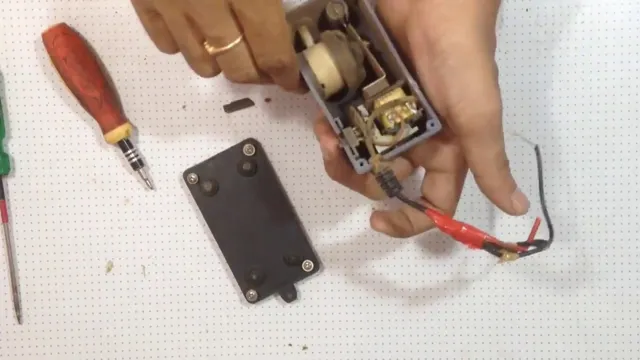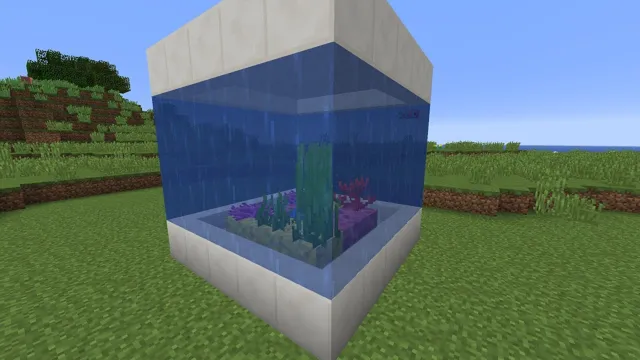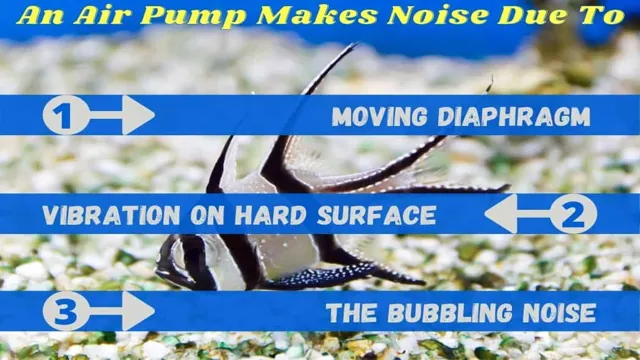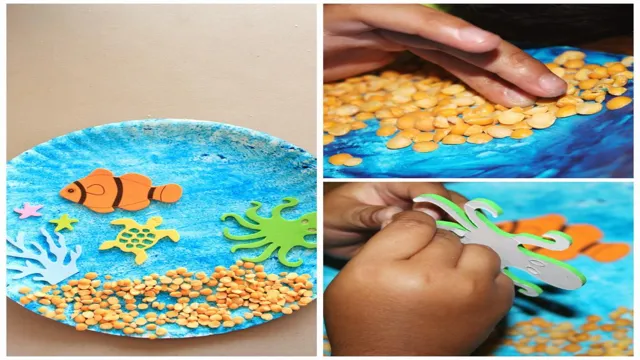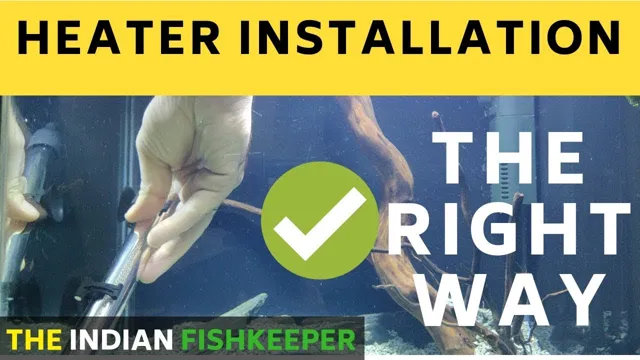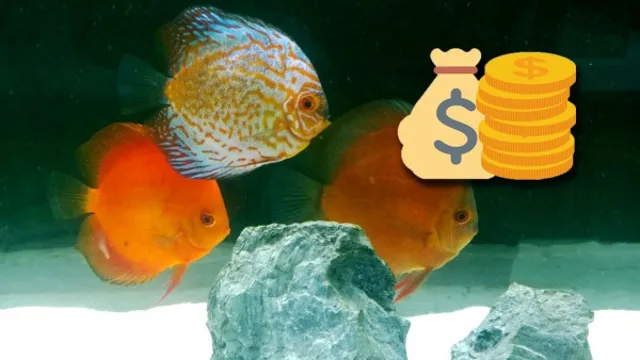Are you having trouble with your aquarium air pump? Have you noticed a decrease in the bubbles or even complete silence from your beloved fish tank? If so, don’t worry! Fixing an aquarium air pump is a straightforward process that anyone can do with the right tools and knowledge. In this step-by-step guide, we’ll walk you through everything you need to know to get your aquarium air pump up and running again. Think of it like a visit to the doctor for your fish tank, but with no hefty bills! With a little patience and some basic know-how, you’ll have your aquarium back to its bubbly self in no time.
Let’s dive in!
Identifying the Problem
When your aquarium air pump stops working, it can cause quite a dilemma for your fish. The first step in fixing the problem is identifying the issue. Is the air pump making noise but not producing bubbles? Or is it completely silent? If it’s making noise but not bubbling, the problem is likely a clogged air stone or a dirty air filter.
Cleaning or replacing these components should solve the issue. If the air pump is completely silent, the problem could be a faulty motor or a disconnected hose. Check all connections and make sure the motor is functioning properly.
In some cases, the air pump may need to be replaced altogether. Whatever the issue may be, a little troubleshooting can go a long way in fixing your aquarium air pump and keeping your fish healthy and happy.
Check for Power Issues
When your computer or other electronic devices suddenly shut off, it can be frustrating and disconcerting. The first thing to do in this situation is to check for power issues. Is the device properly plugged in? Is the power outlet working? If the device is plugged into a power strip, is the strip working correctly? Sometimes, the issue can be as simple as a loose power cord or a flipped switch.
Other times, it may be a more complicated issue, such as a malfunctioning power supply or a blown fuse. By checking for power issues first, you can quickly identify the problem and take the necessary steps to fix it. Remember to always prioritize safety when dealing with electricity, and don’t hesitate to seek professional help if you’re not comfortable troubleshooting the issue yourself.

Inspect the Pump Mechanism
When inspecting the pump mechanism, the first step is to identify the problem. Is the pump making strange noises? Is it failing to provide the necessary pressure? Once you’ve identified the issue, you can start to assess the cause. It could be something as simple as a clogged filter or a loose connection, but it could also be a more serious issue like a damaged impeller or motor.
It’s important to investigate thoroughly to determine the root of the problem and prevent further damage to the pump. Remember to always follow safety procedures and turn off the power before inspecting any pump components. Don’t hesitate to reach out to a professional for assistance or advice if needed.
Ensuring the proper functioning of your pump is crucial in maintaining a safe and efficient system for your business or home.
Fixing the Pump
Aquarium air pumps are an essential part of any aquarium setup as they help to oxygenate the tank’s water, stimulating fish growth and maintaining healthy fish. However, when your aquarium air pump starts to malfunction, it can seem like a big problem. But with a few straightforward steps, you can fix your pump and save yourself from having to buy a new one.
The first thing to do is to unplug your pump and inspect it for clogging, dirt or damage. Then, clean the air filter and the tubing with vinegar or hydrogen peroxide and rinse them thoroughly. If the problem persists, try lubricating the motor’s rubber components with petroleum jelly or silicone oil. (See Also: How to Make Fish Aquarium at Home in Hindi: A Comprehensive Guide for Beginners)
Lastly, reassemble the pump and switch it on to see if the problem is fixed. If not, you may have to take apart the pump, locate the malfunctioning element and either replace or repair it. In conclusion, maintaining your aquarium air pump will help it last longer, and the regular cleaning will save you time and money in the long run.
Clean the Pump
After continuous usage, it’s common for a pump to get clogged with debris, dirt, and other materials that can block the flow of liquid. When this happens, you can’t use your pump properly until it’s cleaned. Cleaning the pump requires you to shut off the power and disconnect the hoses from the inlet and outlet.
Then, you’ll need to remove the pump cover to gain access to the impeller assembly and check the suction screen. Once you’ve found the debris, you can remove it and clean out the impeller assembly and suction screen with a soft-bristled brush or cloth. Afterward, reassemble everything and test the pump to ensure that it’s working correctly.
Regular maintenance will lengthen the life of the pump, and you won’t have to deal with costly repairs or replacements. Using soap can be a quick temporary clean up solution, but make sure to rinse all the soap out before using the pump again.
Replace any Damaged Parts
When it comes to fixing a damaged pump, it’s important to replace any damaged parts. Not only does a faulty part affect the performance of the pump, it can also cause further damage to the pump itself. So, it’s important to identify which parts are damaged and replace them as soon as possible.
Some common parts that may need to be replaced include impellers, seals, and bearings. These parts can wear out over time, especially if the pump is used frequently or in harsh conditions. By replacing these parts, you can ensure that your pump is functioning properly and will continue to do so for years to come.
Don’t try to repair a damaged part, as it’s unlikely that it will work as well as a new one. Plus, it may cause further damage to the pump. So, if you notice any signs of damage, be sure to replace the necessary parts right away.
By doing so, you’ll save yourself time, money, and headaches in the long run.
Reassemble the Pump Mechanism
To reassemble the pump mechanism, start by placing the pump head back onto the cylinder and tighten the screws to secure it in place. Then, reattach the handle to the metal rod and place it back onto the pump head. Make sure the handle is secured with the retaining clip before moving on to the next step.
Next, place the rubber gasket onto the top of the cylinder and screw the plastic cap back on to seal the pump. Finally, test the pump by pumping a few times to ensure it is functioning properly. If there are any leaks or issues, troubleshoot the problem before using the pump again. (See Also: How to Make a Minnow Aquarium: A Step-by-Step Guide for Beginners)
By following these simple steps, you can fix your pump and get back to using it for all your pumping needs.
Maintenance Tips
If you’re experiencing issues with your aquarium air pump, don’t worry, it’s a common problem that can be easily fixed. First, check if the air pump is still receiving power and if all the connections are secure. If it’s not a power issue, the most likely cause is a clogged air stone or airline tubing.
To clean the air stone, take it out and soak it in hot water mixed with a mild solution of vinegar or bleach. If the tubing is clogged, you can use a thin brush or pipe cleaner to gently push out any debris. Another common problem is the diaphragm or motor becoming worn out.
If this is the case, it’s best to replace these parts rather than attempting to fix them. Remember to regularly clean and maintain your aquarium air pump to avoid any potential problems in the future. Keep your fish and aquarium happy and healthy by ensuring that they have optimal oxygen levels.
Regular Cleaning Schedule
Keeping a regular cleaning schedule is essential to maintain a healthy environment in your home. It can be easy to let cleaning tasks pile up and become overwhelming, so it’s important to create a plan and stick to it. One tip is to break down the tasks into smaller, manageable chunks.
For example, set aside time every day to do a quick tidy up and wipe down of surfaces, then tackle deeper cleaning tasks on a weekly or monthly basis. Make sure you have the right tools and cleaning products on hand, and take care to properly clean and disinfect high-touch areas like light switches, doorknobs, and countertops. By staying on top of cleaning tasks, you’ll not only have a more pleasant living space, but you’ll also reduce the risk of illness and allergies.
Proper Placement of the Pump
When it comes to maintaining pump systems, one crucial aspect is the proper placement of the pump. It’s important to ensure that the pump is positioned correctly, so it can function at its highest level of efficiency. One of the most significant factors to consider when placing a pump is its surroundings.
The location of the pump should be away from any potential sources of damage, such as extreme weather conditions or massive machinery. It’s also important to ensure that the pump is installed in an area that is easily accessible for any necessary maintenance or repairs. Proper placement of the pump will ensure it can operate smoothly without any disruptions or breakdowns.
Keyword: pump systems.
Conclusion
In conclusion, fixing an aquarium air pump can be a daunting task, but fear not! With a little patience, a bit of elbow grease, and the guidance in this article, you’ll be back to producing those bubbly, oxygen-rich waters for your finned friends in no time. Just remember to never underestimate the power of unplugging and plugging back in, and don’t hesitate to ask for help if needed (from a trusted fish-keeping community or even a professional). With these tips and tricks, your aquarium air pump will be as good as new and your fish will be breathing easy.
FAQs
How often should I replace the air stone in my aquarium air pump and how do I do it?
It is recommended to replace the air stone every 6 months to a year, or as soon as it becomes clogged or cracked. To replace it, simply disconnect the air tube and remove the old stone from the pump. Then, insert the new stone and reattach the air tube.
Why is my aquarium air pump making a loud noise and how can I fix it?
A loud noise from the air pump can be due to a variety of reasons, such as a dirty air filter or faulty valves. To fix it, first clean or replace the air filter and check for any blockage in the air tube. If the noise persists, check the valves for any damage or malfunction and replace them if needed.
How can I increase the airflow in my aquarium air pump?
There are a few ways to increase the airflow in your aquarium air pump, such as by using a larger air pump, upgrading to a high-quality air stone, or using multiple air outlets with air distribution valves. You can also try adjusting the air pressure and flow rate on the pump.
My aquarium air pump won’t turn on, what could be the problem?
If your aquarium air pump won’t turn on, check that it is properly plugged in and that the power outlet is working. Check the fuse in the pump, and replace it if necessary. If these steps don’t work, there may be a fault in the motor or wiring, and it may need to be repaired or replaced.
What is the correct placement for my aquarium air pump and air stone?
Ideally, the air pump should be placed above the water line and close to the aquarium, to reduce the amount of pressure required for the pump to function. The air stone should be placed at the bottom of the aquarium, preferably in a high-flow area to ensure proper circulation of air.
How can I check if my aquarium air pump is working properly?
To check if your aquarium air pump is working properly, first check for airflow by placing your finger over the end of the air tube. You should feel a steady flow of air. You can also hold the air stone under water and check for a steady stream of bubbles. If there is no airflow or bubbles, check the power source and connections, and clean or replace the air filter.
Why is my aquarium air pump producing very weak airflow?
Weak airflow from an aquarium air pump can be caused by a clogged air filter, blockage in the air tube, or a faulty motor. To fix it, clean or replace the air filter, check the air tube for any blockage, and ensure the motor is functioning properly. You can also adjust the pressure and flow rate on the pump to increase the airflow.

